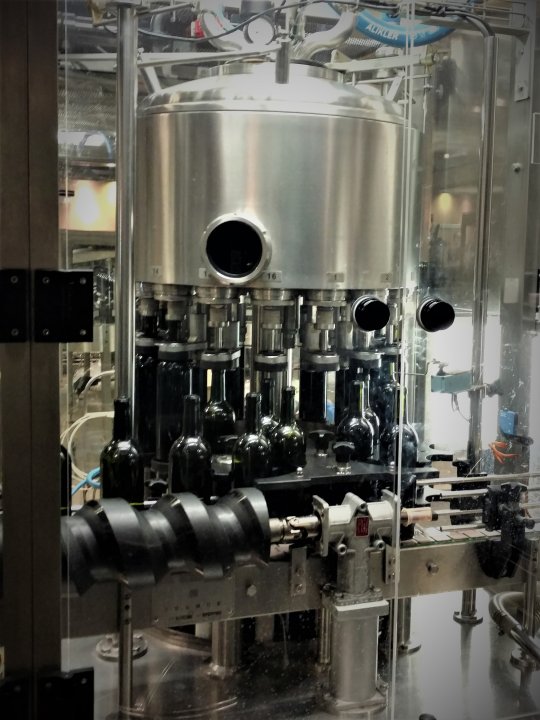Oxygen management
The bottling operation is sensitive, first because the wine is very sensitive to oxidation at this stage. Second, because the possibilities of enrichment in dissolved oxygen can be high, they must be kept to a minimum. There are many key points to take into account:
-
Wine transfers from the storage vat to the bottling unit are one of the points when the wine is exposed to oxygen the most. Particular care must be taken during this last transfer by inerting the entire system and using as few connections and elbow fittings as possible. Similarly, a low flow rate should be used to move the wine.
-
Management of oxygen content in the headspace: the HSO (Head Space Oxygen) represents more than half of the TPO (Total Packaged Oxygen). It is therefore essential to control the air supply during the pumping. Too much oxygen can lead to saturation of the wine with dissolved oxygen. Saturation is when the wine cannot consume all the oxygen it contains. This usually results in deterioration in the wine's quality, for example by irreversible aromatic changes. To avoid this, it is preferable not to proceed with a wine that is too cold, which would favour oxygen dissolution. It is also possible to inert or vacuum seal the bottles during filling in order to reduce the wine's exposure to oxygen. Systems that are directly installed on the filling-corking machine allow better protection from oxidation (See : Preparation of wine prior to bottling).
-
Choice of stopper: the stopper material determines its airtightness, screw caps are more airtight than cork stoppers. Each stopper is characterized by an oxygen transfer rate (OTR). This is the amount of external oxygen that enters the bottle during storage through the closure. This quantity varies according to the type of stopper and can be provided by the cork manufacturer.
-
Inerting or vacuum sealing the bottles: some filling machines allow the reduction of oxidation by inerting the bottles and/or the headspace. Some bottling spouts are equipped with additional columns, one enabling air in the empty bottle to be sucked out, while another fills the bottle with a neutral gas, thereby reducing the wine's contact with oxygen. Some systems allow the wine to flow along the bottle to further reduce the risk of oxidation. Other systems allow the headspace to be inerted with a neutral gas just before corking or to be evacuated just prior to corking.
-
SO2 adjustment
-
Management of bottling temperature: the colder the temperature, the higher the dissolution of oxygen in the wine.

